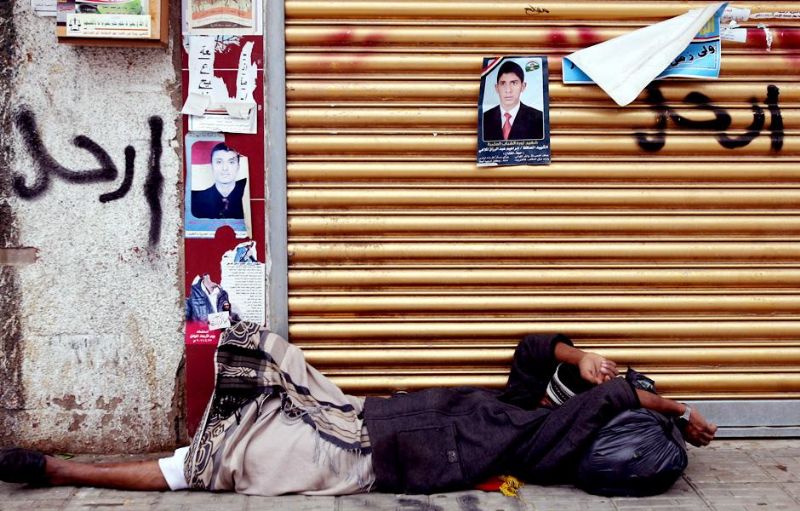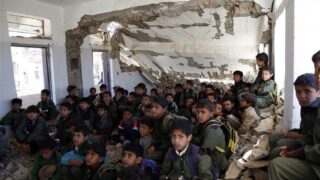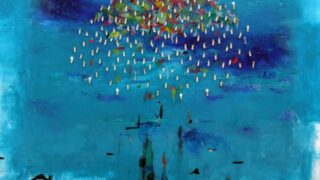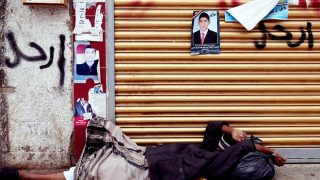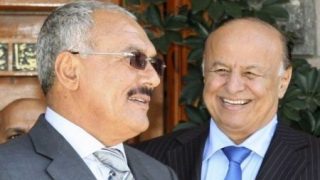Decisions made during the National Dialogue Conference (NDC) in Yemen have not been implemented, particularly those that are not linked to the drafting of a new constitution.
A transitional justice law was not issued, and the National Commission for Transitional Justice was not formed, nor was an independent national commission formed to investigate human rights violations that occurred in 2011. No law was issued for the recovery of funds and looted public and private lands resulting from the abuse of power.
Monopoly contracts, which exploited oil resources and related services, were not canceled. The state did not take any action to recover weapons and military equipment looted during armed conflicts. The army was not incorporated in a way that made it possible for the body to be a unified, national professional force. Detainees were not released and the Ministry of Information was not dismissed. Meanwhile, an independent national body to oversee the media was not formed. The national security apparatus and the political security services were not restructured, their terms of reference were not determined and the parties which took over state buildings did not rid them of old staff.
The Feb. 11, 2011, revolution in Yemen was indeed the first revolution to be led and executed by the Yemeni popular masses and the middle class, who were able to impose their views during the comprehensive NDC. However, this situation changed later and the conflict between the revolutionaries and the former regime turned into conflicts between the revolutionaries themselves. This is why the decisions of the NDC became more unreachable — a challenge that was compounded by government weakness. In addition, the presence of the traditional elites in the NDC was a sign that some were not serious about fixing the structural issues that Yemen has suffered from for decades. What is shows, in fact, is that some within the elite were taking advantage of the former regime, while others wanted to maintain it so they could take advantage of power in the future.
Pouncing on power
A few weeks after signing the Gulf initiative, activists from Al-Islah led the so-called Revolution of Institutions. The purpose of this was not to reveal corruption or hold the corrupt officials accountable. It was rather to remove the senior officials supporting former President Ali Abdullah Saleh and replace them with Islah-affiliated officials. However, this “revolution” did not achieve its objectives. Most of the business owners and state institutions committee members designated by Saleh were sheikhs and members of tribes, so they organized tribal militias to resist the Revolution of Institutions.
Ever since they invaded Sanaa last September, Ansar Allah, who are Houthis, organized popular and revolutionary committees, claiming that their objective was to protect the state institutions. But, in reality, they carried out acts similar to those enacted by the Islah-affiliated institution revolutionaries. However, the Houthis targeted the Islah-affiliated officials. Those committees were able to accomplish many objectives thanks to their militia-like nature.
Where’s the government?
Implementing the NDC’s decisions requires the presence of a powerful and sovereign government, which is absent in Yemen. The government was already weak before the revolution turned into a failed state.
Each of the conflicting parties was wondering, “Where’s the government?”
President Abed Rabbo Mansour Hadi answered by saying that he was not presented with a government, and that is why he was not able to be an effective ruler. He was simply a referee between the parties in the power struggle, organizing the division of power between the conflicting parties and distributing the high-ranking positions, including the leaderships of the army and the security apparatus. Most of his decisions were just announcements that had already been made by those parties or imposed on him, and them, by more powerful figures.
By looking at the current distribution of power, it is possible to see that the most powerful figure is Sheikh Sayyid Abdul-Malik al-Houthi, who does not hesitate to make public certain decisions that Hadi should be announcing instead. He is often capable of pushing Hadi to change some of his decisions, such as to increase the price of petroleum products. He is currently seeking to pressure Hadi to issue an alternative resolution to the one specifying the number of regions in the federal state, which the president had issued in light of the distribution of power map in 2013, which was based on the representation ratios at the NDC. Now that Ansar Allah have accomplished all of these military victories, defeating their rivals, they no longer find their share of the power distribution enough, and began to form a parallel authority represented by the popular committees and imposing their decisions on everyone.
People's revolution and revolutions of public parks
The freedom and change revolutionaries (of the Feb.11, 2011 revolution) demanded the freeing of the capital, Sanaa, and other major cities from military camps. Specifically, they called for turning the 1st Armored Division (FAD) camp in the capital into a public park called March 21, 2011, Garden. Hadi issued a decision to transform the camp into a public park, under the management of the secretariat of the capital. As a symbolic gesture, the park was designated to General Ali Mohsen al-Ahmar, the godfather of the revolution, with the name of the park celebrating the date he joined the revolution.
Mohsen, however, exploited the park’s name to gain personal publicity. However, he did not hand it over to the secretariat of the capital, as per the text of the presidential decision. Instead, the park/camp remained under his control until he fled to an unknown destination on Sept. 21, 2014, when Houthis stormed into the capital and took control of the area. It remains under their control to this day. The Houthis changed the name of the park to September 21st Garden, as they no longer believed in the revolution of the Yemeni people, that is to say, the revolution of February 11, which they had actively participated in. Their literature and the writings of their leader only refer to the Sept. 21 revolution.
However, the revolutionaries of Feb. 11 do not care about the symbolic aspect of the park designation and the names of the revolution’s traditional powers as much as they care about the deviations from the path of the revolution, led by traditional powers. The revolution shifted from a revolution aimed at overthrowing the regime to a one seeking to topple the people. This was described by Hadi as a shift from the revolutionary logic to the logic of revenge. But every cloud has a silver lining.
This logic of revenge toppled the elites, who were a nightmare for the revolutionary masses. Gen. Ali Mohsen al-Ahmar and Sheikh Sadeq al-Ahmar helped topple Saleh. For his part, Saleh allied with Sayyid Abdul-Malik al-Houthi to avenge his opponents, and they were able to overthrow Mohsen and the military project, Sadeq and his sheikdom project, and Sheikh Abdul Majid al-Zindani and the project of a caliphate. Although all of these figures were toppled and lost their positions in the official and general distribution of power nexus, the dream of a modern democratic civil state has not yet been achieved, and indeed currently seems to be farfetched.
This is especially true since this series of reprisals helped Sayyid Abdul-Malik al-Houthi and Ansar Allah, who are accused by its opponents of seeking to replace the republican government with a regime ruled by an Imam. This is a justified accusation, especially in light of the following: the ambiguity of this group’s political project; the large gap between its rhetoric and practice; and its use of its military power to selectively take its revenge of some old regime symbols instead of using its power to pressure Hadi and the other parties to change the old regime’s institutions and laws. Perhaps this group is avoiding changing those institutions since it seeks to benefit from them in its vision of implementing the Houthi political project.
The regime built by Ali Abdullah Saleh during the last two decades has nothing to do with a republic, other than in name. It is a flexible and elastic regime. Those who fill the office of president of the republic may turn the state into a sultanate, a sheikhdom-ruled regime, an imam-regime or an Amiri regime.
The people’s revolution will triumph
Despite this bleak reality, the Yemeni people's revolution will triumph and the Yemeni people will have the last laugh. The political and social conflict has yet to be resolved, and traditional powers of the old regime powers (or even those of the new regime) will not be able to decisively resolve it. Their current victories are temporary victories based on tactical alliances. Moreover, all of these conflicting traditional powers rely on tribesmen, and the Yemeni tribes’ political affiliation map is rapidly changing, according to professor Mohsin al-Aini, formerly prime minister of Yemen. Most importantly, the popular revolution believes the ongoing conflict is against the traditional powers, i.e., the old regime powers. Therefore they stand on the sidelines, leaving them alone to suffer their own anger and disappointment. But if the conflict evolves to threaten the future of the revolution, the revolutionary actors will find themselves compelled to become fully involved in the conflict.
Translated by: Al-Monitor

